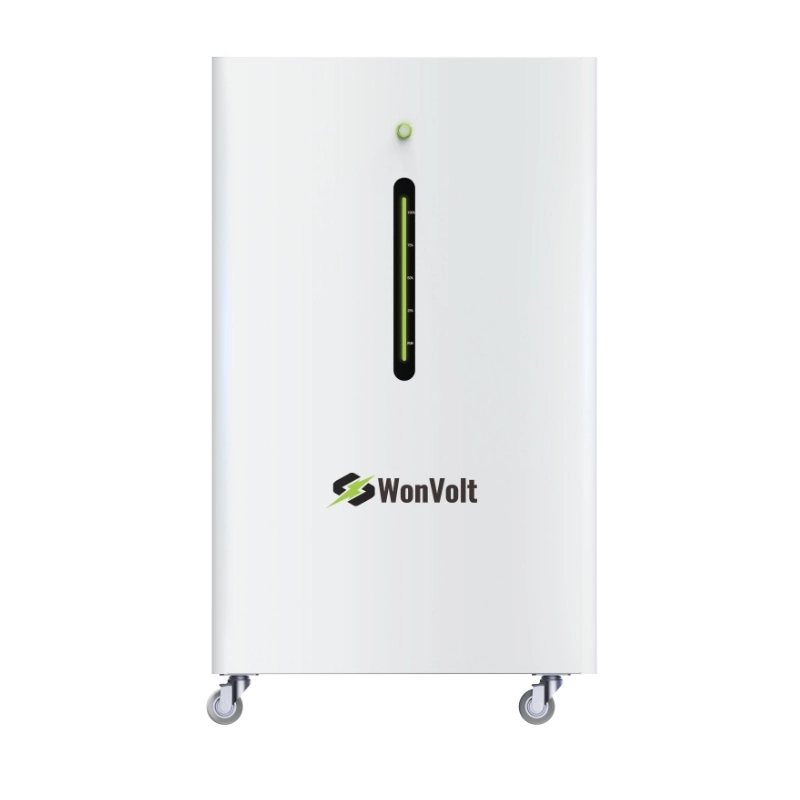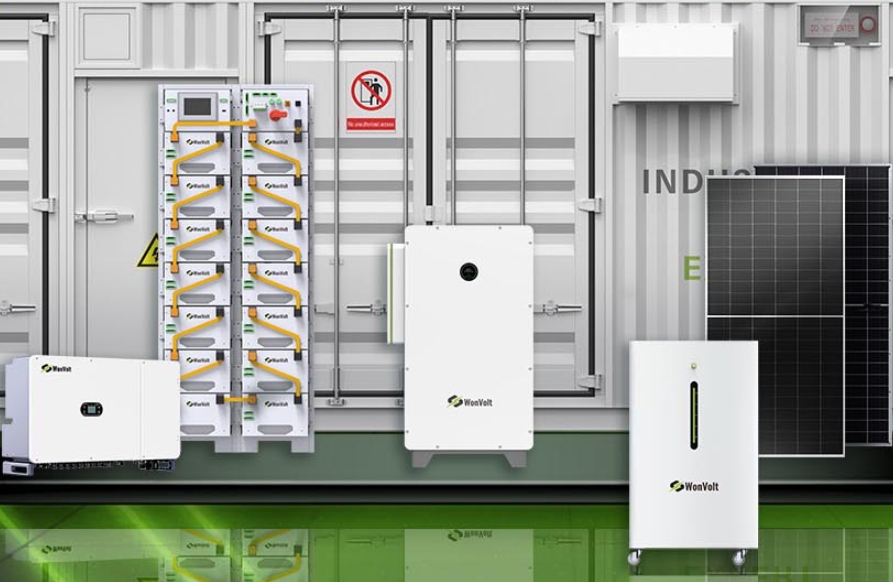Zajímá vás životnost baterie? Lithiumové baterie napájí všechno od telefonů až po solární systémy. Ale jak dlouho skutečně vydrží? Zvláště při skladování energie pro domy nebo farmy. My’ Kopám hluboko. Typy krytí, faktory ovlivňující životnost a tipy, jak je udržet. Pokud jste’ Na slunečním, to záleží. Pojďme’ S rozbít to.
Pochopení životnosti lithiové baterie
První off. Co dělá “ životní cyklus” Myslíte? To’ Klíč k tomu, jak dlouho vydrží lithiumové baterie.
Definice cyklu nabíjení a vybíjení
Cyklus? Jedno plné nabíjení a vybíjení. Lithiové ionty se při nabíjení pohybují z katody na anodu. Zpět během použití. Každá cesta trošku nutí baterii.
Degradace se děje. Materiály se rozpadají pomalu. Kapacita se časem ztrácí.
Řekněme, až 80% původní kapacity. Například 500 cyklů znamená, že dosáhne 80% po 500 kolech.
V solárním skladování? Cykly jsou spojeny s každodenním používáním. Nabíjení z panelů den, vybíjení noc.
Proč je životní cyklus důležitý pro uživatele
Přemýšlejte o reálném světě. Baterie s 3000 cykly? Trvá roky, pokud jezdí jednou denně. 8 let až 80% kapacity.
Ne všechny cykly jsou rovné. Částečné výboje se počítají méně. Hloubka vybíjení (DoD) hraje velkou roli.
Pro solární instalace snižuje vysoká životnost cyklu náklady. Méně náhrad.
Typy lithiových baterií a jejich životnost
Není všechno lithiové baterie stejně. Typy se v životě liší. Pojďme’ s porovnávat.
Lithium-iontové (Li-iontové) baterie
Obvyklé v gadgetech. 2-10 let průměrně. 300-1000 cyklů.
Proč krátká? Chemie. Katody na bázi kobaltu se rychle rozkládají.
Na solární? Dobře pro malé systémy. Nejlepší pro těžké použití.
Lithium-železný fosfát (LiFePO4) baterie
Těžší. 5-15 let. 3000-7000 cyklů.
Taky bezpečnější. Menší riziko požáru. Stabilní fosfát.
WonVolt je používá v úložišti. Skvělé pro venkovské solární. Zvládá hluboké výboje.
Lithium polymerové (LiPo) baterie
Flexibilní tvar. 2-5 let. 300-500 cyklů.
Lehký. Pro drony, RC hračky. Není ideální pro stacionární skladování.
Tabulka průměrů:
| Typ baterie | Průměrná životnost | Životní cyklus |
| Li-iontové | 2-10 let | 300-1000 |
| LiFePO4 | 5-15 let | 3000-7000 |
| LiPo | 2-5 let | 300-500 |
| Olovo-kyselina (Porovnat) | 3-5 let | 200-300 |
| NiMH (Porovnat) | 2-5 let | 500-800 |
LiFePO4 vítězí za dlouhověkost. Překonává ostatní 2-3x.
Faktory, které ovlivňují, jak dlouho vydrží lithiové baterie

Životnost je’ t opraveno. Zvyky a podmínky to mění.
Dopad teploty
Teplo zabíjí baterie. Přes 30°C? Degradace se zrychluje. Chladné pod 0°C? Kapacita klesá.
Ideální: 15-25°C. V solárním skladování, stínové jednotky. Používejte chlazení.
Extrémní teploty snižují životnost o polovinu. Monitor.
Hloubka vybíjení (DoD)
Hluboké odtoky bolí. 100% ministerstvo obrany? Více nošení.
Udržujte 20-80% rozsah. Prodložuje cykly 2x.
Sluneční soustavy? Správná velikost. Vyhněte se plným prázdninám.
Nabíjecí postupy
Rychlé nabíjení? Stresuje buňky. Lepší pomalu.
Přeplatí? Nebezpečné. Používejte chytré nabíječky.
Nejlepší částečné nabídky. Vyhněte se 0-100% často.
Vzory použití
Časté cykly? Krátší život. Také baterie stárnou.
Na venkově solární, denní použití v pořádku, pokud je řízeno.
Bullet body na rychlé opravy:
Skládejte při 40-60% poplatku.
Vyhněte se úplnému vypouštění.
Používejte BMS (Battery Management System).
Pravidelné kontroly napětí.
Tyto zvyšují, jak dlouho vydrží lithiumové baterie.
Jak vypočítat životnost lithiové baterie
Chceš čísla? Snadné kroky.
Shromažďte specifikace
Jmenovitá kapacita (Ah). Míra nabíjení/vybíjení. Hodnocení cyklu výrobce.
For WonVoltu‘ s 15kWh lithiová baterie: 51,2V, 300Ah, LiFePO4.
Obrázek DoD
Kolik používáte na cyklus? Řekněme 80% ministerstva obrany.
Odhadovat cykly
Vzorec: Celková životnost cyklů = Nominální cykly / (DoD faktor).
Ale jednoduché: Pokud je hodnoceno 5000 na 80% ministerstva obrany, to’ s vaší základnou.
Skutečný výpočet: runtime = kapacita / zatížení. Cykly = Celková energie / (Kapacita * DoD).
Příklad: 100Ah baterie, 50Ah denní použití. DoD 50%. Cykly denně 1. Životnost: Nominální cykly.
Nástroje pomáhají. Aplikace simulují.
Pro solární: Výstup faktorového panelu, spotřeba.
Testování zdraví lithiové baterie
Jak se kontrolovatDon’ Hádej.
Testování napětí
Plné nabíjení: ≥3.7V na buňku. Nízká? Problém.
Použijte multimeter.
Testování kapacity
Věnovaný tester. Měří skutečné vs. hodnocené.
Méně než 80%? Čas nahradit.
Vnitřní odpor
Zdravé: < 100 mΩ. Vysoká? Degradace.
Pro nástroje potřebné.
Ve skladovacích systémech BMS ukazuje zdraví.
Maximální životnost: osvědčené postupy
Chcete delší život? Sledujte tohle.
Správné nabíjecí návyky
20-80% sladké místo. Pomalé nabíjení.
Vyhněte se teplu během nabíjení.
Tipy pro skladování
Chladné, suché místo. 50% poplatek.
Dlouhodobě? Kontrolujte každé tři měsíce.
rutinní údržba
Čisté terminály. Aktualizace firmwaru.
Pro solární: Balance buňky.
LiFePO4? Vyžaduje méně údržby.
Porovnání s jinými typy baterií
Proč lithium? Trvá déle než kyselina olovená (200-300 cyklů).
NiMH: 500-800. Dobře, ale lithium je lepší.
Alkalické: Nebíjecí. Police 5-10 let.
Lithium září v cyklech, účinnost.
Kdy vyměnit lithiové baterie
Znaky: Kapacita < 80%. Otok. Teplo.
V solární: Pokud klesne výstup, zkontrolujte.
Recyklujte staré. Ekologicky šetrné.
Závěr
Lithiumové baterie vydrží 2-15 let podle typu a péče. LiFePO4 vede s 3000 cykly. Teplota, ministerstvo obrany, nabíjení záleží nejvíce. Vypočítat, testovat, udržovat po dobu maximální životnosti. V oblasti solárního skladování snižují náklady dlouhodobě. Vyberte si správně, vychutnejte si spolehlivou energii.
WonVolt: Váš důvěryhodný dodavatel lithiových baterií
Hledáte trvalé možnosti? WonVolt se hodí. Založena v roce 2016 v čínském Hefei. Dětská společnost Wor-biz (2000). Specializuje se na lithiové baterie LiFePO4 pro skladování energie. Systémy: 3KW-30KW obytné, 50KW-300KW komerční. Vysoká kapacita jako 51.2V 280Ah klastry. Bezpečné, stabilní. Pár s solárními panely N-Type TOPCon. 90 zemí. 2023 obrat 50M USD. Navštivte wonvolt.com pro řešení.
Časté otázky
Jak dlouho vydrží lithiumové baterie při denním používání?
Lithiumové baterie vydrží 2-15 let v závislosti na typu. LiFePO4 často zasáhne 10 s správnou péčí.
Co způsobuje, že lithiumové baterie LiFePO4 vydrží déle než ostatní?
Lithiové baterie LiFePO4 vydrží 3000-7000 cyklů. Stabilní chemie lépe odolává degradaci.
Může teplota ovlivnit, jak dlouho vydrží lithiumové baterie?
- Ano. - Ano. Extrémní teplo nebo chlad zkracují životnost lithiumových baterií. Uchovávejte 15-25 ° C pro nejlepší.
Jak vypočítám, jak dlouho budou vydržet lithiumové baterie?
Používejte specifikace jako kapacita a ministerstvo obrany. Jmenovité cykly dávají odhad o tom, jak dlouho vydrží lithiumové baterie.


